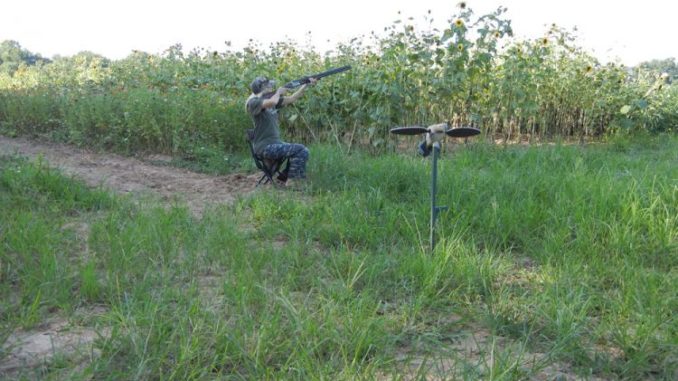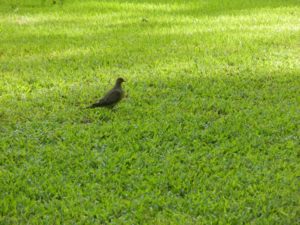
If the field you’re invited to just doesn’t feel right, don’t hunt it
The first split of Louisiana’s 2018-19 dove season will open Sept. 1 in both north and south zones. The north zone’s first split will run through Sept. 23. Subsequent splits are Oct. 6 – Nov. 11 and Dec. 16 – Jan. 14. In the south zone, the first split ends on Sept. 9. The second split dates are Oct. 6 – Nov. 25, and final split is Dec. 16 – Jan. 14.
The daily bag limit is 15, and the possession limit is 45. The bag limit applies to mourning doves, white-winged doves and fully dressed Eurasian collared and ringed turtle doves in the aggregate (any combination not to exceed 15 total). There is no bag limit on Eurasian collared doves or ringed turtle doves, provided a fully feathered wing and head remain attached to the carcass of these birds.
Shooting hours are a half hour before sunrise until sunset, except for opening day of the first split on WMAs and LDWF-leased fields, where shooting will begin at noon. License requirements are a basic hunting license and Harvest Information Program (HIP)certification for anyone 16 years of age or older. Remember, a WMA hunting permit for anyone aged 18 -59 is required for WMAs. See the Louisiana 2018-2019 Hunting Regulations for full details.
Dove fields: what’s OK — and what’s not
No one wants to get caught hunting doves over illegal bait. But some folks are willing to take the chance, and there are enough of them around to keep wildlife agents busy on opening day. For the rest of us who would rather avoid the suspense and hunt legally, here are a few things to remember.
Most good dove hunting spots fall into one of three categories. The first is natural vegetation that provides seeds which attract doves and other birds. Such locations include recently cleared timber clear-cuts, and freshly mowed hay or grass fields. They can provide surprisingly good shooting, particularly in pine timber areas a long way from agricultural crop fields.
Some of the best shooting I have experienced in recent years was on a clear-cut. The timber had been harvested in late winter and early spring. The area had then been control burned. Over the summer croton and other natural vegetation had matured and was shedding seed the doves liked.

The next, and best, dove hunting spot is a field where sunflower, millet, corn or other agricultural crops have been grown. Migratory bird hunting regulations allow for the hunting of doves over areas where crops grown on the field have been manipulated to improve hunting. Examples include harvested corn or milo fields where the stalks are mowed or chopped to ground level, exposing more waste grain, and sunflower or millet fields where the crop is mowed to scatter seeds on the ground. These areas are fine for hunting — so long as no additional seed or other feed is brought into the field.
The last situation for review is the recently planted field. This is one to approach with caution, since ‘planting’ has been frequently used as a ruse to illegally bait for doves. Planted fields legal for hunting are those where wheat or other seed has been sown on properly prepared soil in accordance with official recommendations, including planting dates and seed amounts per acre for fall planting. Steer clear of areas where large amounts of wheat or other seed have been haphazardly dumped or scattered on unprepared ground on several different locations
In situations where a hunter is invited to a dove shoot and has no idea why doves are lured to the field, he or she should ask the host how it was prepared. Go out on the field and look before hunting. On freshly plowed ground, always kick the turned soil over and look for heavy applications of feed or seed that have been covered or concealed. If it doesn’t look or feel right, or if the host’s answers are vague or confusing, don’t hunt.
Think safety
Anyone who has ever dove-hunted with a group has heard shotgun pellets raining down from above. And more than a few of us have been ‘peppered’ with pellets fired in our direction at a low flying bird. I recall one hunt where a young girl was sitting in her father’s truck with the windows down. Her dad fired at a dove passing low between his location and the truck. Some of the pellets entered the cab through the open window and one struck her on the face: It stung and left a mark, but didn’t cause serious injury. However, she could have easily been hit in the eye and suffered permanent damage. Always wear eye and ear protection and establish zones of fire. And be sure to keep track of everyone’s location.
Dove season is our first eagerly anticipated fall hunt. Keep it legal, keep it safe and have fun.


